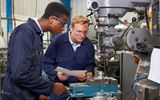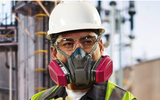Gas Detector Bump Test: Bump Testing and Calibration of your Gas Monitors
Gas monitors need regular calibration and bump testing if you want to be sure they are working properly. Like a guitar, monitors can drift out of tune. You've got a couple of choices to get it working properly. And as everyone who owns a gas monitor knows - whether it's a multi-gas monitor like the GasAlert Micro Clip XT, or a single-gas monitor like the Gas Clip Technologies H2S Monitor - a quick bump test before using it to protect your life is an excellent, and highly recommended idea.
I'm fully aware that the instructions for your disposable monitor say that no calibration is required for the life of the instrument. But bump testing the sensors is important. The sensors used in the disposable monitors are often the same as the ones used in unlimited life monitors, and those in other gas detectors are bump tested regularly.
Bump testing is easy. The basic concept is to expose the sensors to the target gas so you know for sure the monitor will go into alarm if it happens in the field. Whether you're using a single gas monitor like the BW Clip H2S Monitor or a multi-gas monitor, they'll come with a clip and a bit of clear hose that you'll secure over the sensor plate. Attach the other end of the hose to your calibration gas and regulator. Turn the monitor on and let it boot up. Then open your regulator and allow gas to flow until the monitor goes into alarm. This will take 10 seconds - certainly no more than 20. Turn off the gas, coil up your hose, and put it away till next time.
For calibration there are several options, and it'll depend on the type of work you do, how many monitors you have that need to be serviced, and how often you use your monitors. We have several clients that use multi-gas monitors for environmental surveys. They only need them a couple times a year, so they send their monitors to us for calibration services each time.
Another option is a docking station. Draeger has a simple solution in their Bump Test and Calibration Station. It uses no electricity, so it's great for remote operations in the field. Another option if your company uses BW is the MicroDock II. This expandable system can be configured to work with a range of BW monitors and has the added benefit of being a charging station as well. Workers come in from their shift, push the monitor into its cradle, and the MicroDock II does the rest. The next shift of workers can easily see which monitors are ready to go and which are still undergoing charging or sensor testing.
Of course calibrating manually isn't difficult. But if your company has 500 monitors, you'd better hope you're not the new guy in the department. Cause it's going to take a while. We also have a nice, basic video that shows how to complete a calibration of a BW 4-gas monitor.
Featured searches
Gas Monitor Calibration Log, 4 Gas Monitor Bump Test, How Often Should You Bump Test A Gas Detector, Multi Gas Detector Calibration
Recent Posts
-
Hand and Eye PPE Machinists Rely On
Machining environments are inherently dangerous, with workers often surrounded by heavy machinery …Sep 18th 2024 -
Understanding Respirators With Organic Vapor Cartridges
In today’s dynamic industrial environments, several processes involve exposure to hazardous airbo …Sep 16th 2024 -
The Importance of Safety Helmets With Chin Straps: Why OSHA Prefers Them Over Hardhats
Introduction to OSHA's Helmet Safety Guidelines Head injuries in the workplace remain a serious …Sep 11th 2024





